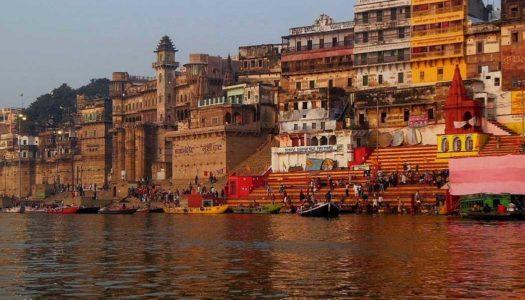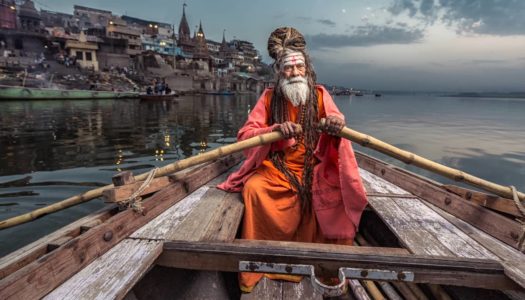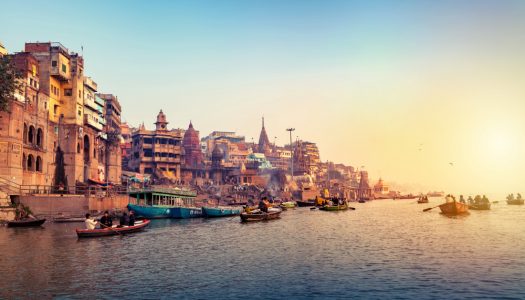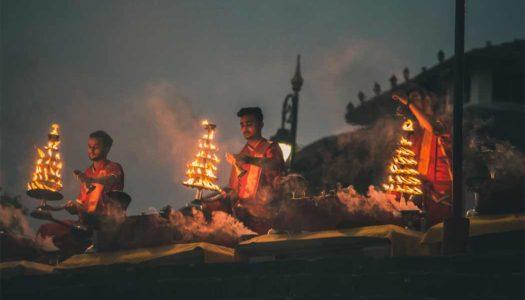The ghats of Varanasi are the perfect examples of geographical splendours that are also believed to have great religious significance in Hinduism. Spending an evening on any of the ghats of Varanasi will prove to be a soul-refreshing experience. If it is peace and calmness that you are looking for, come here and you won’t be disappointed. In the mornings, the orange and yellow hues of the rising sun reflect off of the rippling surface of the Ganges River. In the evening, the pink sky looks at its reflection in these waters and you can witness this gorgeous site while listening to the spiritual Ganga Aarti.
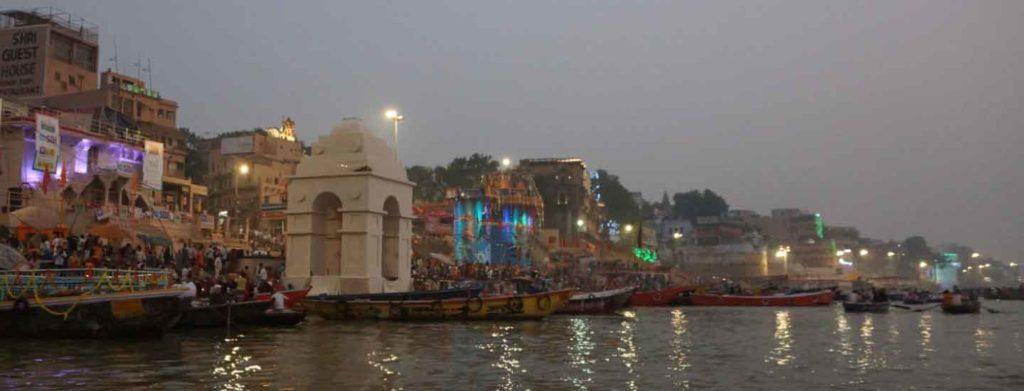
Varanasi is a place where the rich ethnic history of our country meets the powerful supremacy of positive spiritual energy. The ghats of Varanasi are not mere steps that lead to a river. These are the places where several devotees offer their prayers to the Almighty and several more come to share their stories with whoever is listening from above. This is the holy place where we thank Mother Nature for being generous to us while others find solace in the rhythmic rush of the mighty river.
If you are planning to visit the ghats of Varanasi soon, book your affordable stays at Hotels in Varanasi, relax for a while and head to the 9 most alluring ghats in the city.
Read on to find out more about them.
Also Read: Varanasi’s Cultural Heritage: Temples in Varanasi
Book Budget Hotels in Varanasi
Explore The 9 Enchanting Ghats of Varanasi
1 – Chet Singh Ghat
Chet Singh Ghat along with the Chet Singh Fort are the most famous tourist places in Varanasi. This is one of the ghats of Varanasi that has a historical story associated with it. The ghat and the fort were built by Raja Chet Singh, the founder of the city. It was previously called the Shivala Ghat and the fort also went by the same name. However, in 1781 AD, Raja Balwant Singh was defeated by Warren Hastings of the British army. He had to flee the fort and take shelter elsewhere while the Britishers took full control of the place.
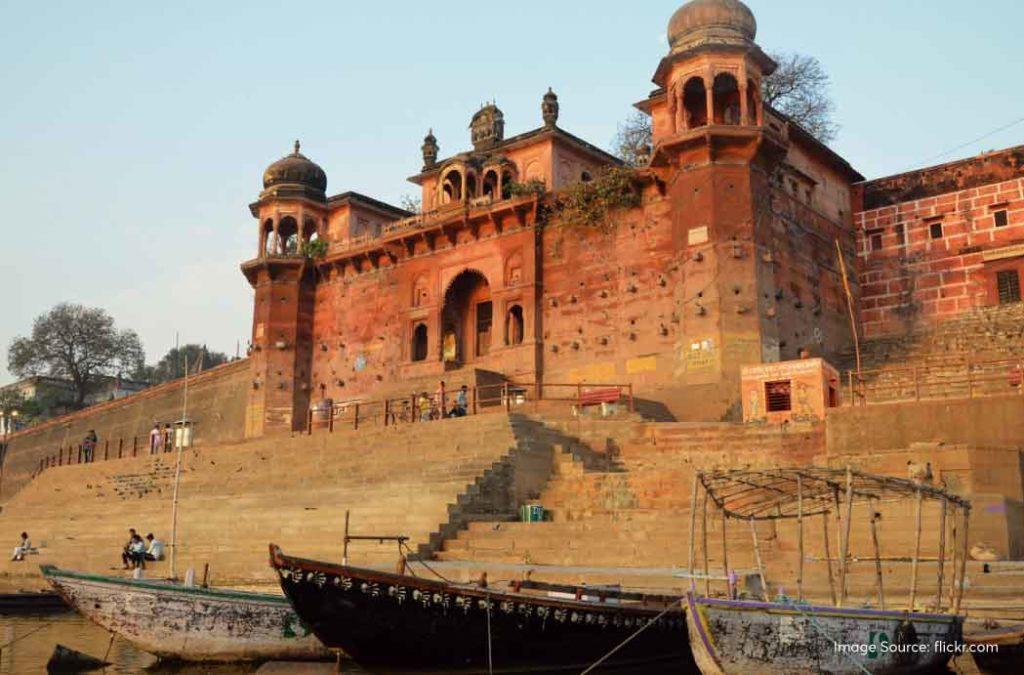
Interestingly, it is said that when the Britishers imprisoned Raja Chet Singh, he used a rope made of turbans to escape the place! In the 19th century, Maharaja Prabhu Narayan Singh, a successor of Raja Chet Singh, recovered the fort from the foreign rulers and restored it to its past glory. Today, it is named after the mighty warrior who tried to save his land from the invaders. That being said, this ghat sees at least 1000 people visiting it every day. During Dev Deepawali, close to 6,00,000 devotees gather to witness the Ganga Aarti!
Location – 72V4+MRP, in front of Chet Singh fort, Ghats of Varanasi, Shivala, Varanasi, Uttar Pradesh 221001
2 – Assi Ghat
Assi Ghat is present toward the southernmost end of Varanasi city. This is one of the relatively uncrowded ghats of Varanasi. The devotees are lesser in number but you will still see people coming to take a dip in the waters before heading toward the temples to offer their prayers. Less crowded doesn’t mean that it is not popular! This is one of the largest ghats in the city and is very well-known among tourists. You will see that most of the houses, residential spaces, and hotels here are occupied by travellers, research enthusiasts and foreigners.
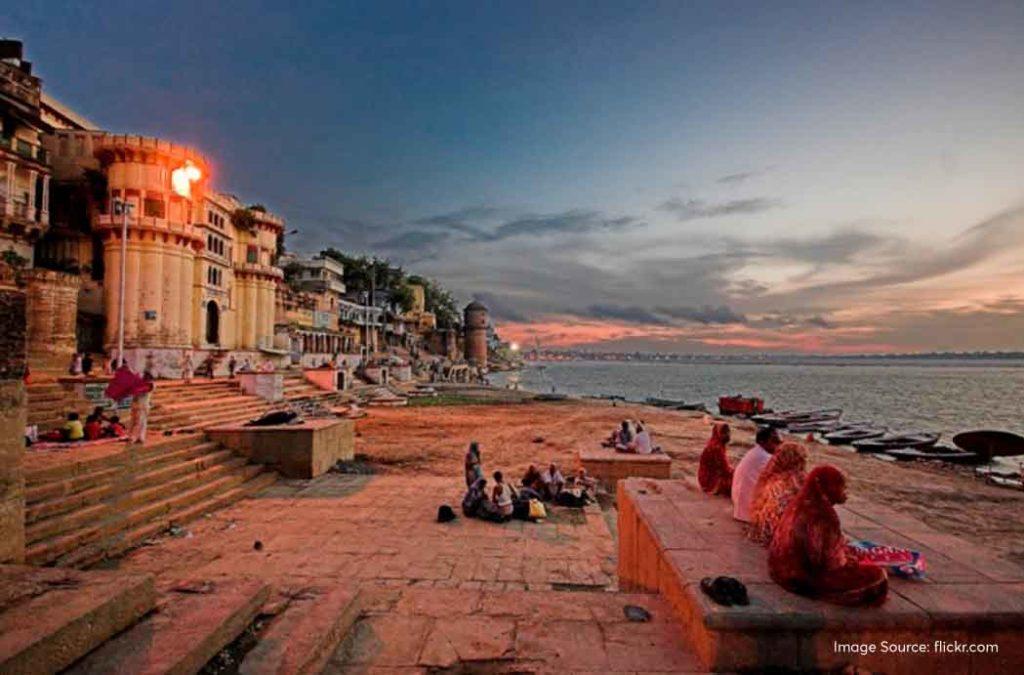
This ghat is capable of accommodating close to 23,000 people during festivals like Shivratri! However, you will only see about 300 to 400 people coming here daily when there are no special occasions. Remember that we said it is ‘relatively’ less crowded. Dev Deepawali is one of the main festivals celebrated here and a large number of devotees visit Varanasi during that season. Seeing how foreigners prefer to stay around this ghat, you will see a few trendy cafes and boutiques in the locality. After you explore the ghat, you can go fetch yourself a coffee or a sandwich.
Location – Assi ghat, Nagwa Road, Shivala, Varanasi, Uttar Pradesh, 221005
3 – Man Mandir Ghat
The Man Mandir Ghat is to the north of Dashashwamedh Ghat and has the holy Someshwar lingam. Thus, it is also popular by the name – Someshwar Ghat. There is a Rajasthani connection to this place. The Man Mandir Ghat was built by Raja Man Singh in 1600 AD and you will also see a regal palace near the ghat. This ancient palace has the best architecture that reflects the Rajputana construction style and the window carvings are a treat to look at.
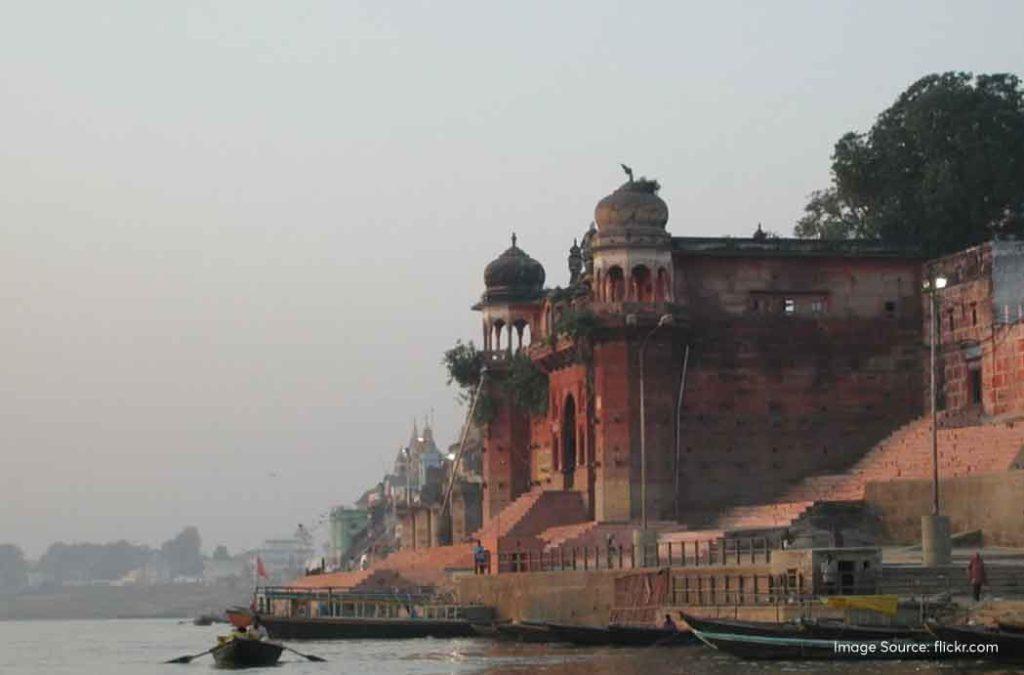
In 1710 AD, Raja Sawai Jai Singh made simple changes to the palace and added the infamous Jantar Mantar or planetary observatory on the terrace. The equipment is still intact and you will be surprised to see that it is still possible to see the astronomical wonders from the well-made structures. When you visit the Man Mandir Palace, do not forget to witness the spectacular views of Varanasi city that the stone balconies of the place offer.
Location – D31/178, Dashashwamedh Ghat Rd, Bhairavi Ghat, Bangali Tola, Varanasi, Uttar Pradesh 221001
4 – Darbhanga Ghat
Darbhanga Ghat also has a royal palace overlooking the Ganges River. It was acquired from the Nagpur rulers by the royal family of Darbhanga, Bihar, after whom the ghat is named. The Brij Rama Palace was once the recreational residence of the Darbhanga rulers who used to come here to witness the Ganga Aarti and also see the temple rituals done to seek blessings from Lord Shiva. Later, it was turned into a tourist attraction and now serves as a luxury hotel.
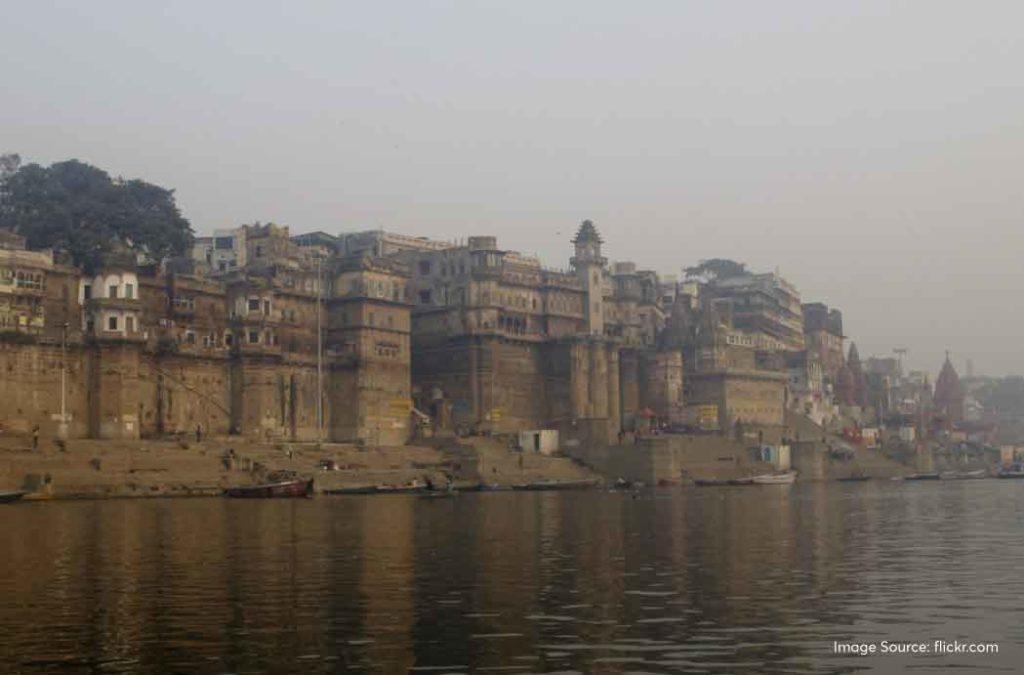
Shridhara Narayana Munshi is the man who laid down the building stone for the palace. A ghat is named after him called the Munshi Ghat. This is adjacent to Darbhanga Ghat so you can explore both of them together. You will be surprised to know that it took about 18 years to renovate the palace and turn it into the hotel that you see today!
Location – 8245+3VW, Near Ahilyabai Ghat, Uttar Pradesh 221010
5 – Dashashwamedh Ghat
The Dashashwamedh Ghat is about 30 minutes away from the Assi Ghat. You can visit both of them back to back on the same day. Also, this is believed to be one of the most famous and powerful ghats of Varanasi. According to Hindu mythology, it is said that Lord Brahma welcomed Lord Shiva to Kashi on this ghat. Lord Brahma, believed to be the creator of the universe, also performed ten Ahswamedha yagna or ten horse rituals on the steps of this ghat.
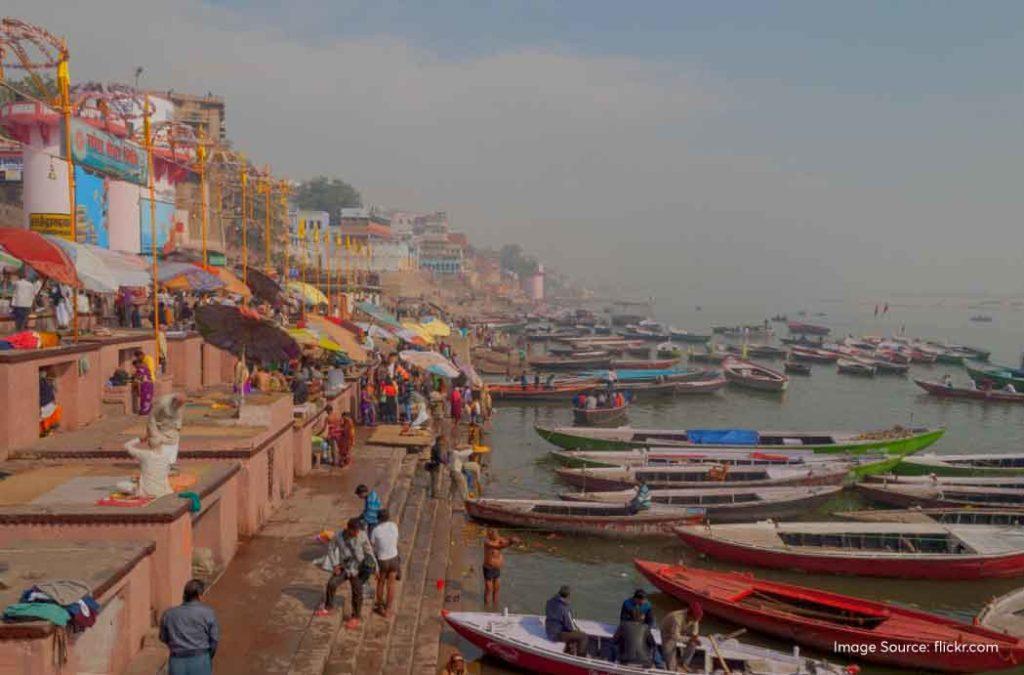
Every evening, Ganga Aarti happens here and thousands of people come over to witness its glory. The holy hymns and chants reverberate in your body and rejuvenate your soul. The palpable positive energy is so dense that you can feel it from miles away. From morning to evening, the atmosphere here is very vibrant with priests, devotees, fruit and flower sellers, tourists and locals who come over to enjoy the view of the Ganges River. This is the main ghat of Varanasi and is also close to the Kashi Vishwanath Temple.
Location – Dashashwamedh Ghat Rd, Ghats of Varanasi, Godowlia, Varanasi, Uttar Pradesh 221001
6 – Bhonsale Ghat
Bhonsale Ghat is a scenic place in Varanasi where you will see devotees dressed in yellows and oranges, taking a dip in the holy water of Ganga. You also have a palatial palace in the backdrop, built by the Maratha rulers of Nagpur. The windows are very small but you can still see the intricate carvings on them, even while you are standing on the steps of the ghat! However, a word of caution! The steps on the Bhonsale Ghat are a little narrow and can get slippery over time when they get wet with dripping water from the devotees’ clothes. So, be very careful while placing your step.
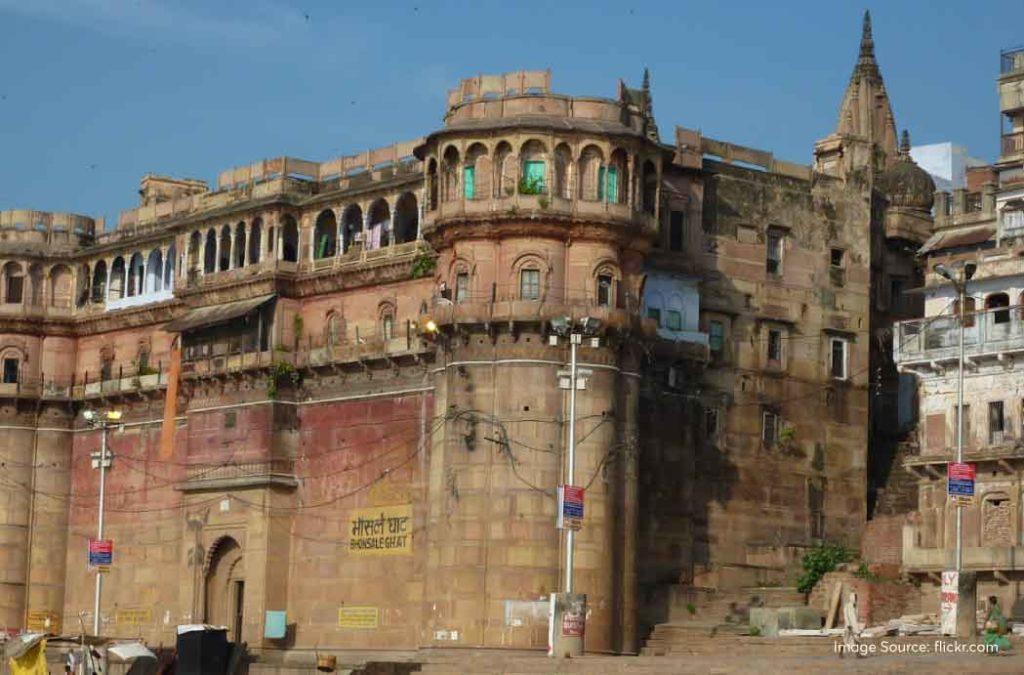
This ghat also has an open crematorium just like most of the ghats of Varanasi. The special attractions here are the three heritage temples – Lakshminarayan temple dedicated to Lord Vishnu, Yameshwar temple dedicated to the God of Death, and Yamaaditya temple dedicated to a form of Lord Surya or the Sun God. Bhonsale Ghat is undoubtedly the spiritual heartbeat of Varanasi and a splendid place to spend your evenings while listening to the distant chants of the temple priests.
Location – 8278+5C5, Near Ganga Mahal Gate, Ghats of Varanasi, Ghasi Tola, Varanasi, Domari, Uttar Pradesh 221001
7 – Scindia Ghat
The Scindia Ghat is present in the Siddha Kshetra region of Varanasi and you will find a lot of devotees near this place. Here, you can seek blessings from an ancient Shiva Temple that is partially submerged in the water. It is said that when the Scindia Ghat was being constructed in the 1830s, a part of this temple got submerged because of the heavy current of the Ganga River.
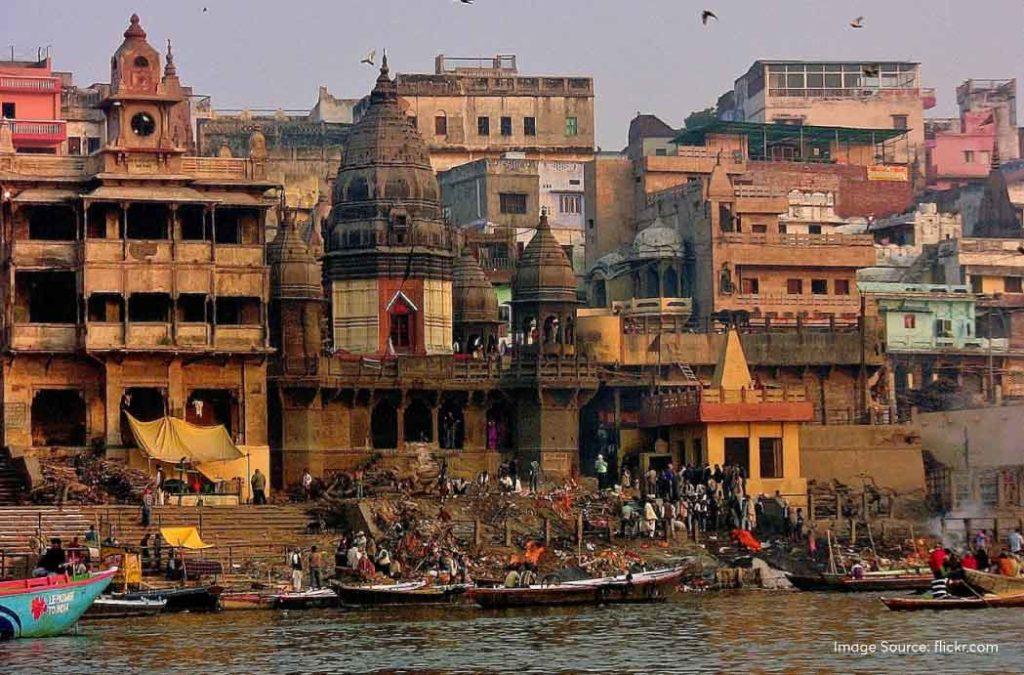
People who come here say that walking through that water and finally seeing Lord Shiva in his sanctum sanctorum is an ethereal experience that no one should miss out on. If you want to stay away from open cremations and enjoy the serene beauty of the Ganges alone, then you must be heading toward Scindia Ghat. You will see people immersing the ashes of their family members in the flowing water but cremations do not happen as frequently as in the other ghats of Varanasi.
Location – Dattatreya math, Sindhia Ghat, Varanasi, Uttar Pradesh 221001
8 – Manikarnika Ghat
The Manikarnika Ghat has the Scindia Ghat on one side and the Dashashwamedha Ghat on the other side. It is also called the Mahashamshan Ghat. This is one of the oldest ghats of Varanasi and is also mentioned in various Hindu scriptures. For instance, it is believed that when Goddess Sati’s dead body was cut by the Sudarshana Chakra of Lord Vishnu, her earring landed on the Manikarnika Ghat. Thus, this place is also believed to be a Shakti Peeth. Open cremations happen from dawn to dusk at Manikarnika Ghat.
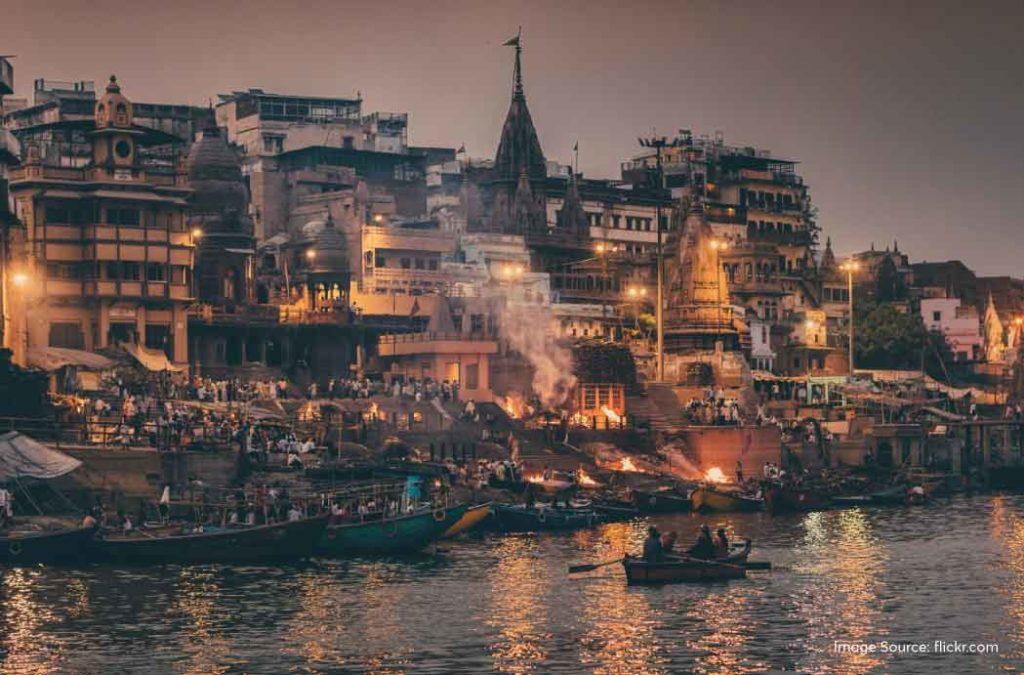
It is said that the people who are cremated here will break the cycle of life and death to attain eternal salvation. This is how they can rid themselves of karma and reach God’s doorstep. The atmosphere here is very melancholic but the local priests say that life and death are a part and parcel of life. If you are happy that a life is born, you should be content that a life completed its time on Earth and is finally reaching its true destination. This ghat is close to the Kashi Vishwanath Temple and the Hindu scriptures say that the Manikarnika Kund you find near the ghat was built by Lord Vishnu.
Location – Near Lalita Ghat, Ghats of Varanasi, Lahori Tola, Varanasi, Domari, Uttar Pradesh 221001
9 – Panchganga Ghat
We have started this blog talking about the ghat on the southernmost end of Varanasi. Now, let us discuss the Panchganga Ghat that is present on the northernmost end of this holy city. The place gets its name because it serves as the meeting point of five holy rivers – Ganga, Yamuna, Saraswati, Kirana, and Dhutpata. You need to walk around a little and climb down a significant number of stairs to reach the ghat. But your efforts are worth the time you spend here.
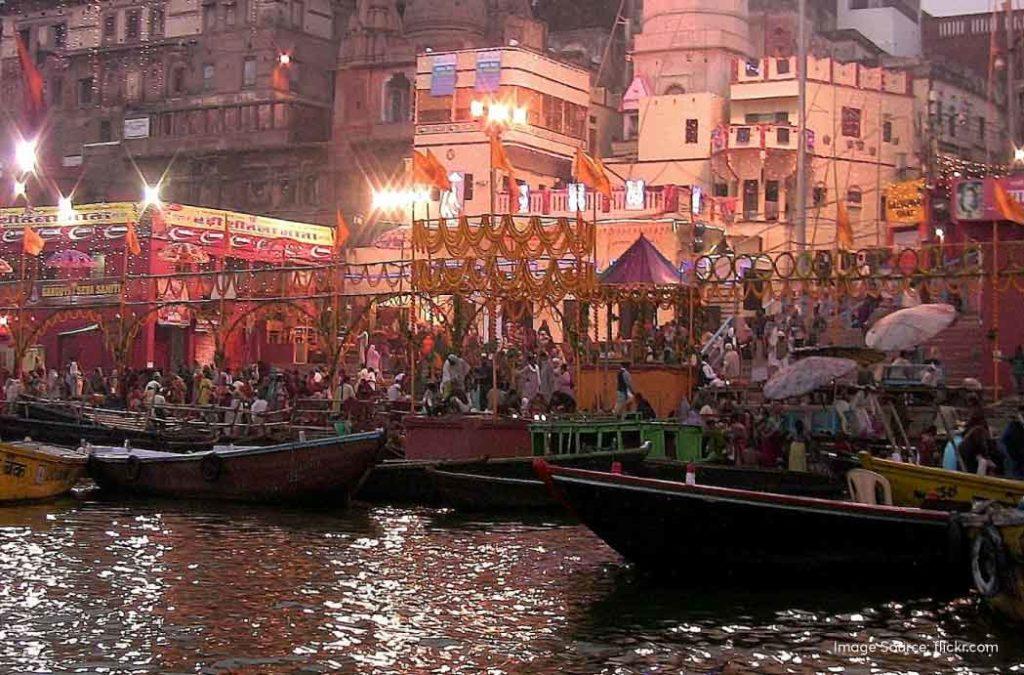
A mosque overlooks the ghat here. It is called the Alamgir mosque and was constructed by Mughal emperor Aurangzeb over an existing Vishnu temple. This is one of the main worship places for Muslims in Varanasi and only they are allowed inside the premises.
Location – 7/111, Sonarpura Rd, Ghats of Varanasi, Bangali Tola, Varanasi, Domari, Uttar Pradesh 221001
There are a total of 84 ghats in Varanasi. They elegantly line the flow of the Ganga and we have only mentioned the 9 ghats of Varanasi that you must not miss out on at any cost! On your next trip to the ‘City of the Dead’, explore the ghats along with the powerful ancient temples of the place.














